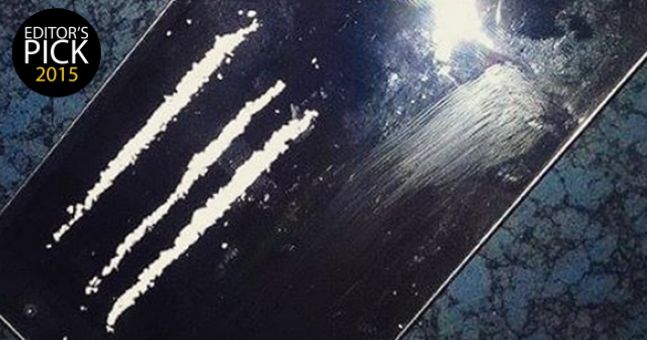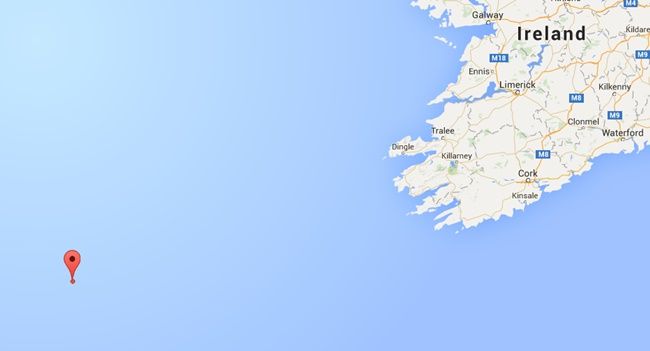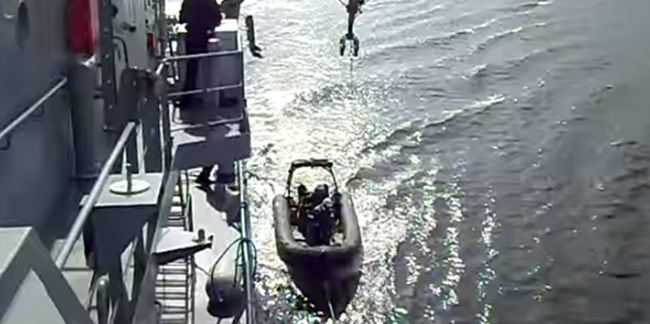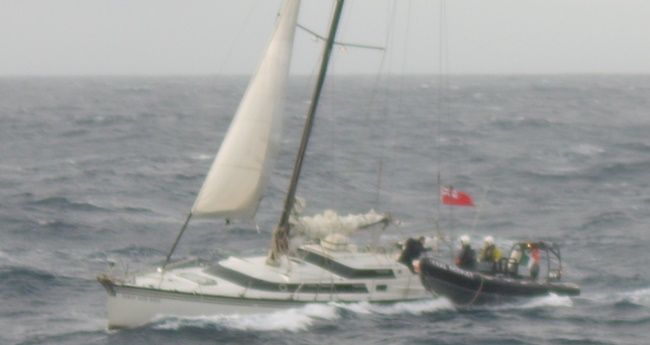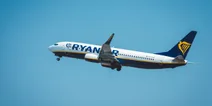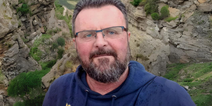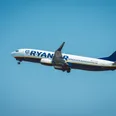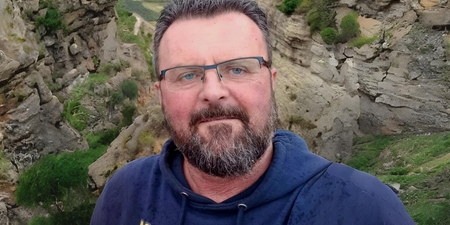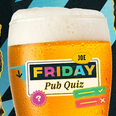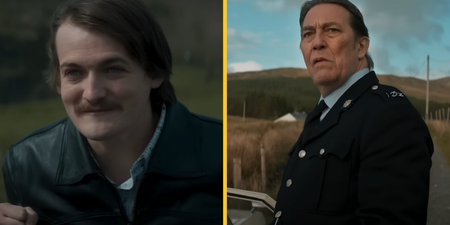One of the biggest drug busts in Irish history.
The topic of cocaine smuggling has been in focus recently because of the new Netflix Original series Narcos.
Watching the story of Pablo Escobar may leave you wondering ‘has smuggling like it ever happened in Ireland?’ It has and this is that story.
**************
When the yacht Dances With Waves left Trinidad in the Caribbean on October 4th, 2008 with the west coast of Ireland its destination, it turned out of be one of the most important sea journeys in the history of the Irish state.
According to news reports, the yacht initially headed south to the coast of Venezuela where they picked up a shipment of cocaine which originated in Colombia.
It was then tracked across the Atlantic by the Maritime Analysis and Operations Centre – Narcotics (MAOC – N) which is an international agency set up to coordinate anti-drug trafficking operations.
The Irish Navy took over when the smugglers moved towards the Cork coast and what happened next was the most significant and influential operation in relation to drug trafficking in Irish waters.
Officially known as Operation Seabight, we’re going to take you back to the pivotal few hours of a stormy night on the Atlantic when the Irish Navy swooped on Dances With Waves.
(The names of the naval service officers have been changed to protect their identity)
Read more: 5 of the biggest drugs’ busts in Irish history
Monday, November 3rd, 2008.
Lieutenant Commander Martin Kelly was nominated as a relief Captain for the Irish Naval Warship LÉ Niamh while their regular Captain was on annual leave for two weeks.
Irish Naval Warship LÉ Niamh
He walked onto the ship on the Monday morning and found a post-it from the man he was covering, it said, “all the hard work is done now, just keep it going for two weeks and enjoy yourself.”
Lt Cdr Kelly had called the Naval Operations Command the evening before to see if there were any outstanding orders he hadn’t been brought up to speed on, and he was told there might be an operation later in the week but the details weren’t specified. That wasn’t unusual as last minute routine operations pop up all the time.
Just to be on the safe side, Lt Cdr Kelly decided to run some training exercises that day to get to know the ship and the crew he was working with in case anything did happen later in the week.
He didn’t reveal to anyone there was a potential operation coming down the tracks but the journalist Paul Williams, who was writing with the Sunday World at the time, was due to visit the ship the following weekend so Lt Cdr Kelly used that as a cover story as to why he was putting them through their paces.
The exercises took place along with the routine operations and patrolling, and the crew were as professional and proficient as you’d imagine. The ship was in good hands.
Tuesday, November 4th, 2008.
2:00pm approx.
The morning had been relatively quiet on the ship but a call came in at approximately 2pm from Commander Eugene McKenna, Commander Fleet Operations (CFO) at Naval Operations Command. It changed the game.
The LÉ Niamh was ordered to head to a specific location off the coast of Cork and to continue routine duties until they were told otherwise. The red pin is the approximate location the ship had to get to.
That afternoon was spent doing routine exercises as well as training exercises for the Naval Boarding Team, the guys who board other vessels at sea, so the seriousness of the situation went up a few notches at this point.
6:00pm approx.
The evening set in and the ship was asked to move to a different location where they were to stay and await further instructions.
The update also ordered Lt Cdr Kelly to prepare a team for an ‘interdiction operation’ which means boarding a potentially hostile vessel, something that had never been done by the navy on international waters without a Garda presence.
The ship set out for the new location and preparations got underway.
Read more: 7 things we love about the new Netflix original series Narcos
Wednesday, November 5th, 2008.
10:00am approx.
A phone call from the Naval Operations Command back on land confirmed that a boarding operation onto a ‘vessel of interest’ involving people from the LÉ Niamh was approved and the whole thing was now officially know as Operation Seabight.
Lt Cdr Kelly was then appointed the Officer in Tactical Command and he gave information to his heads of departments on the ship; Executive Officer – Lieutenant Marie Twomey, Navigation Officer – Lieutenant Claire Gallagher and Sub Lieutenant Jamie Regan.
The rest of the crew were brought up to speed over the ship’s broadcast radio specifically stating that it wasn’t an exercise, it was the real deal.
1:00pm approx.
The morning was spent going through their options; under international law they’d need to be invited onboard by the skipper of the yacht, while under national legislation they didn’t need an invite and could board but only if they had sufficient suspicions.
After a lengthy discussion, they decided to choose the international law option when the moment arrived.
A breakthrough came at approximately 1:00pm when a blip appeared on the ship’s radar in a position where they believed the ‘vessel of interest’ was located.
 The radar long-range tracking of the VOI in poor sea and weather conditions
The radar long-range tracking of the VOI in poor sea and weather conditionsAs all of this was happen, the Irish Navy’s other ship LÉ Roisin was making its way to a position of support in case the LÉ Niamh needed assistance.
5:00pm approx.
The blip on the radar was 22 kilometres away and after much deliberation Lt Cdr Kelly felt he needed more information so they decided to send a reconnaissance team, led by Sub-Lt Jamie Regan, out on a RHIB to try and identify the type of vessel they were dealing with.
The plan was to get the RHIB within seven kilometres of the ‘vessel of interest’ but the weather conditions went against them as gale force seven winds and lashing rain caused engine problems which forced Sub-Lt Regan and his team to return to the LÉ Niamh without the information they required.
While the reconnaissance team were on their mission, Lt Cdr Kelly got word from the Naval Operations Command base back on land that the boarding of the vessel on the radar was to happen at 9pm.
The intelligence that had been passed on was that the yacht was unregistered which gave the naval team the perfect reason to board it with permission to find out the nationality and search for papers.
7:30pm approx.
The vessel on the radar still hadn’t been identified at this point but another big breakthrough happened when the LÉ Roisin confirmed their night vision equipment had picked up a light in the exact location of the blip on the radar which meant there was something there, they had a real target.
Lt Cdr Kelly debriefed his team on all the information and talked them through the boarding plan that lay ahead which involved him telling the team to issue the live ammunition. Live bullets. This was escalating.
The next move was to close the distance between the ship and the yacht but getting too close could alert them which would give the people on it time to dispose of any illegal cargo or make it difficult for the Naval team to get onboard.
8:30pm approx.
The LÉ Niamh released two RHIBs with Sub-Lt Regan and four members of the Naval Boarding Team in one boat and four other members of the NBT in another boat and swiftly moved in on the vessel.
An example of the RHIB that’s typically used in this type of operation
9:35pm approx.
The warship and the RHIBs got close enough to establish that the vessel was mono-hull sailing vessel and that information was passed back to the Naval Operations Command and Joint Task Force back on shore.
9:50pm approx.
The next move was to make radio contact with the yacht like they’d agreed to do by taking the international law option earlier in the day.
Lt Cdr Kelly pushed the talk button and identified himself as the Irish Warship LÉ Niamh and asked the yacht if they could acknowledge the call.
Silence…
He repeated himself, and then there was a crackle on the radio followed by the voice of a man with a soft British accent identifying the yacht as ‘Dances With Waves’.
Once the broadcast was made, the LÉ Niamh and LÉ Roisin turned on their spotlights and fixed them on the yacht as all the available boats surrounded it.
Lt Cdr Kelly explained that he intended to do a lawful boarding under Article 110 of UNCLOS III and the man simply relied: “OK”.
Sub Lt Regan and the Naval Boarding Team were then instructed to board the yacht which they did and there they found three English men who were later identified as Philip Samuel (skipper), Christopher Wiggins and David Mufford.
Samuel was the one that answered the call from Lt Cdr Kelly while Mufford and Wiggins were asleep during the boarding. The conditions on the yacht were pretty squalid and Mufford had been suffering with seasickness so he wasn’t in great shape.
The overt and rapid nature of the boarding meant that there was no resistance from the men and the NBT secured the yacht quite quickly.
The following two hours were spent getting more information about the yacht and confirming the identity of the British men.
Read more: 5 things you didn’t know about Pablo Escobar
Thursday, November 6th, 2008.
00:25am approx.
The three English men onboard the yacht were arrested under section 34 of the Criminal Justice Act 1994 and were informed that they’d be transferred to the LÉ Niamh and then taken to an Irish port.
The next few hours consisted of transferring the men onto the warship and completing the initial search of the vessel.
Mufford and Wiggins were brought over separately, but Samuel had to stay on the yacht to help navigate it back to shore in a safe manner.
Due to the deteriorating weather conditions, and increasing health and safety risks to those remaining onboard, a detailed search of the vessel was postponed until first light.
At 02:00am the yacht, with the skipper and members of the NBT onboard, set off for Castletownbere.
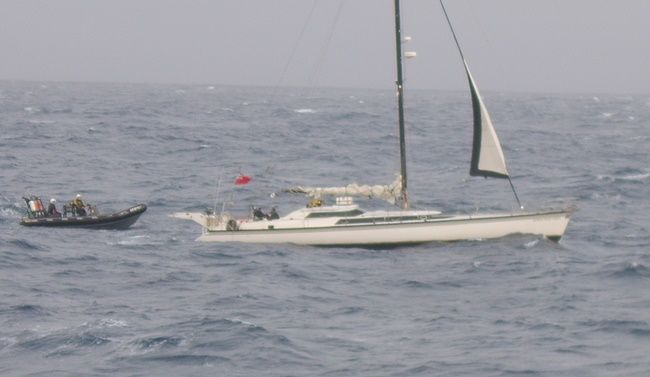 Dances With Waves and Navy RHIB the morning of the arrest the night before, taken in calmer sea conditions
Dances With Waves and Navy RHIB the morning of the arrest the night before, taken in calmer sea conditions10:00am approx.
The skipper was escorted off the yacht but before he did, he told Sub-Lt Regan to go to the cabin and read the logbook entry for November 4th. He read the logbook and it said there were “75 bales” of an unknown substance onboard the vessel. Sub-Lt Regan immediately called the LÉ Niamh and that message was relayed to the team back at the base onshore.
The fact that it was an “unknown substance” raised concerns so Lt Cdr Kelly went to the cabin where the skipper (Philip Samuel) was being held to find out what the substance was and if there were any booby-traps or security devices on the packages.
Samuel said there was nothing that might harm the naval team and that he believed the substance was drugs. He gave up the information voluntarily even though he was under caution and not obliged to say anything.
Sub-Lt Regan was then ordered to look for the packages but was instructed to photograph the area before and during his examination. He was told to look under a sail that was being kept in a locker at the back of the boat. He followed orders and found the 75 bales as per the logbook entry.
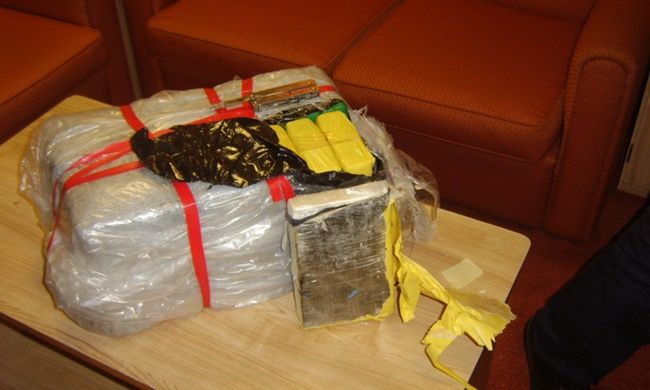 One bale of suspected substance being field-tested for presence of controlled substances
One bale of suspected substance being field-tested for presence of controlled substances12:00pm approx.
In the meantime, Sub-Lt Regan had safely transferred a bale of the substance from ‘Dances With Waves’ onto the LÉ Niamh and they set off for Castletownbere to deliver the substance and prisoners to the guards.
5:00pm approx.
They finally arrived into Castletownbere where the three prisoners and the substance were handed over to the guards and a detailed debrief took place.
Dances With Waves being flanked by the Irish Navy’s RHIB
The aftermath.
The substance was tested and it was confirmed that the package contained cocaine. The origin of the cocaine was thought to be Colombia. It was estimated that there was 1,875kg onboard which had a street value of €440 million, but to break that down even more, it meant 75 million lines of cocaine were taken off the street.
The three men all received ten year prison sentences on July 9, 2009 for their part in the crime while the man who coordinated the trafficking, John Alan Brooks, received a 28 year sentence in 2012.
Irish navy officers with the hidden bales of cocaine
Lieutenant Commander Martin Kelly, Leading seaman Lieutenant Murphy, Sub Lieutenant Jamie Regan and Commander Eugene McKenna were nominated for Commendations for their work. The award process is not yet complete.
Operation Sea Bight was the first international operation involving the Irish Joint Task Force on Drug Interdiction (JTF), which comprises of Garda Siochana, Revenue’s Customs Service and Naval resources who work with MAOC-N and the Serious Organised Crime Agency based in the UK. It’s become the template for similar operations today.
Information, insight and photos via: Irish Naval Service.
All episodes of Narcos are available instantly on Netflix. Sign up to Netflix.com now to watch Narcos and try one month free.
https://www.youtube.com/watch?v=UIsUrz0mOrU
LISTEN: You Must Be Jokin’ with Aideen McQueen – Faith healers, Coolock craic and Gigging as Gaeilge
